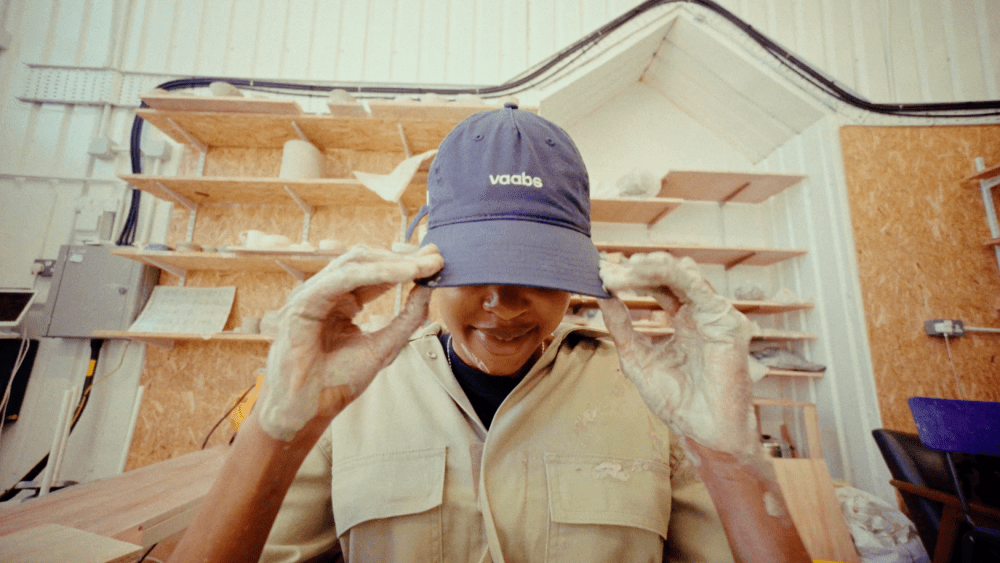This industry perspective is by Tebo Mpanza, the co-founder of Unfound Studio.
For decades, marketers have relied on sweeping generational labels—”Millennials crave experiences,” “Gen Z loves authenticity”—as if entire age groups move in lockstep. But the reality? Consumers today reject these rigid categorizations. They don’t see themselves as just Gen Z or Millennials; they see themselves as runners, designers, skaters, gamers, wellness enthusiasts, or members of niche subcultures that shape their identity far more than their birth year ever could.
Brands that still cling to generational assumptions risk missing the deeper cultural forces driving engagement today. New research from Unfound Studio’s Breaking Behaviours report reveals three emerging consumer behaviours that are reshaping how brands need to think about identity, storytelling, and visual language. If brands want to stay relevant, they must embrace a design-led approach that aligns with cultural currents rather than outdated generational tropes.
© Unfound Studio
The Rise of the Hobbyist: Passion Over Popularity
The cultural pendulum is swinging away from mass trends and passive scrolling and toward hands-on hobbies and niche expertise. As we grow more disillusioned with performative posting and algorithm-fed sameness, we’re choosing to immerse ourselves in passions that offer self-actualisation, connection, and a deeper sense of engagement.
The cultural pendulum is swinging away from mass trends and passive scrolling and toward hands-on hobbies and niche expertise.
Take the rise of “craftfluencers”—creators like Olivia Pottery Girl, whose ceramics content has built a loyal following not because it’s trendy but because it’s deeply personal and skill-driven. This shift reflects a broader desire for meaning over metrics. Brands should ask themselves: What hobby does our brand enable, inspire, or celebrate? Instead of chasing the next viral moment, they need to tap into micro-communities with genuine expertise and storytelling that respects their craft.
© Unsanctioned Athletics
A strong example is Unsanctioned, a disruptive race brand that hosts running events specifically for athletes who see running as more than just a hobby but a lifestyle. As running groups rose in popularity, Unsanctioned Events tapped into niche communities, pushing the sport to new heights. With no fixed route and “no rules,” the races are designed to be fast and frenetic: each event involves a unique racing format revealed 30 minutes before the start, leaving a short window to plan your route. The aim is to provide a platform where dedicated runners can come together to “race, speculate, and celebrate racing.”
Photo by Jay Topham
The IRL Resurgence: From Screen Fatigue to Tangible Experiences
After years of hyper-digital engagement, there’s a clear shift toward physical, in-person experiences. Social media isn’t disappearing, but the way people engage with it is evolving. More users are adopting “lurking” behaviours, consuming content without posting, while others are actively detoxing from screens altogether. The question brands should be asking is not, How do we build an online community? but rather, How do we get people to connect around shared interests?
© Nothing Tech
One brand pioneering this shift is Nothing, the London-based tech company behind some of the most visually striking phones and earbuds on the market. Instead of launching products through traditional digital ads, Nothing has built a cult-like following by hosting offline events and collaborations that feel exclusive and immersive. Their partnership with Saucony, which combined sneaker culture with live running events, is a prime example of how brands can integrate IRL experiences into their marketing DNA.
For design and branding, this means moving away from purely digital-first strategies and thinking about how visual identity can extend into real-world spaces through murals, pop-up installations, and spatial storytelling. It’s no longer enough for a brand to just connect digitally; it needs to be physically felt and experienced in culture.
The Clean Catch-Up: When Transparency Becomes Stakes
Consumers no longer see transparency as a brand differentiator; they expect it. From clean ingredients to ethical sourcing, the demand for radical honesty is shaping industries, particularly in the health and wellness space. But here’s the catch: Many brands still communicate sustainability and ethical practices in a way that feels corporate, disconnected, and ultimately unconvincing.
The brands winning in this space are those that embed transparency into their very DNA.
People Care. Planet Care (formerly known as Haeckels), the UK-based skincare and fragrance brand, is a standout example. They’ve gone beyond standard sustainability claims by creating fully compostable packaging, releasing open-source guides to their production process, and even implementing “profit wheels” that show exactly where customers’ money is going. Their design aesthetic reinforces this clarity—clean, minimal, and refreshingly devoid of the overused ‘greenwashing’ language that plagues so many brands in the sustainability space.
© Haeckels
For visual storytelling, the lesson is clear: transparency isn’t just about saying the right things—it’s about showing them. The most progressive brands are using design as a tool for radical honesty, from ingredient breakdowns woven into branding to interactive elements that allow customers to trace a product’s origin.
The brands leading the next wave of engagement are those that understand culture as the real driver of consumer connection.
So, What Comes Next?
The old model of generational marketing—where brands bucket consumers into broad, reductive categories—is crumbling. Instead, the brands leading the next wave of engagement are those that understand culture as the real driver of consumer connection.
This isn’t about chasing short-lived trends; it’s about recognizing the deeper behavioural shifts that are shaping how people express themselves, engage with brands, and experience the world. As Breaking Behaviours highlights, today’s consumers identify through their passions, their real-world interactions, and their demand for transparency, not the year they were born. The challenge for brands isn’t just to keep up—it’s to design for the future of culture.
Tebo Mpanza is the co-founder of Unfound Studio. The insights in this piece are informed by Unfound’s latest research, Breaking Behaviours.
Header image: © Nothing Tech
The post Why Generational Marketing is Dead—and What Comes Next appeared first on PRINT Magazine.

